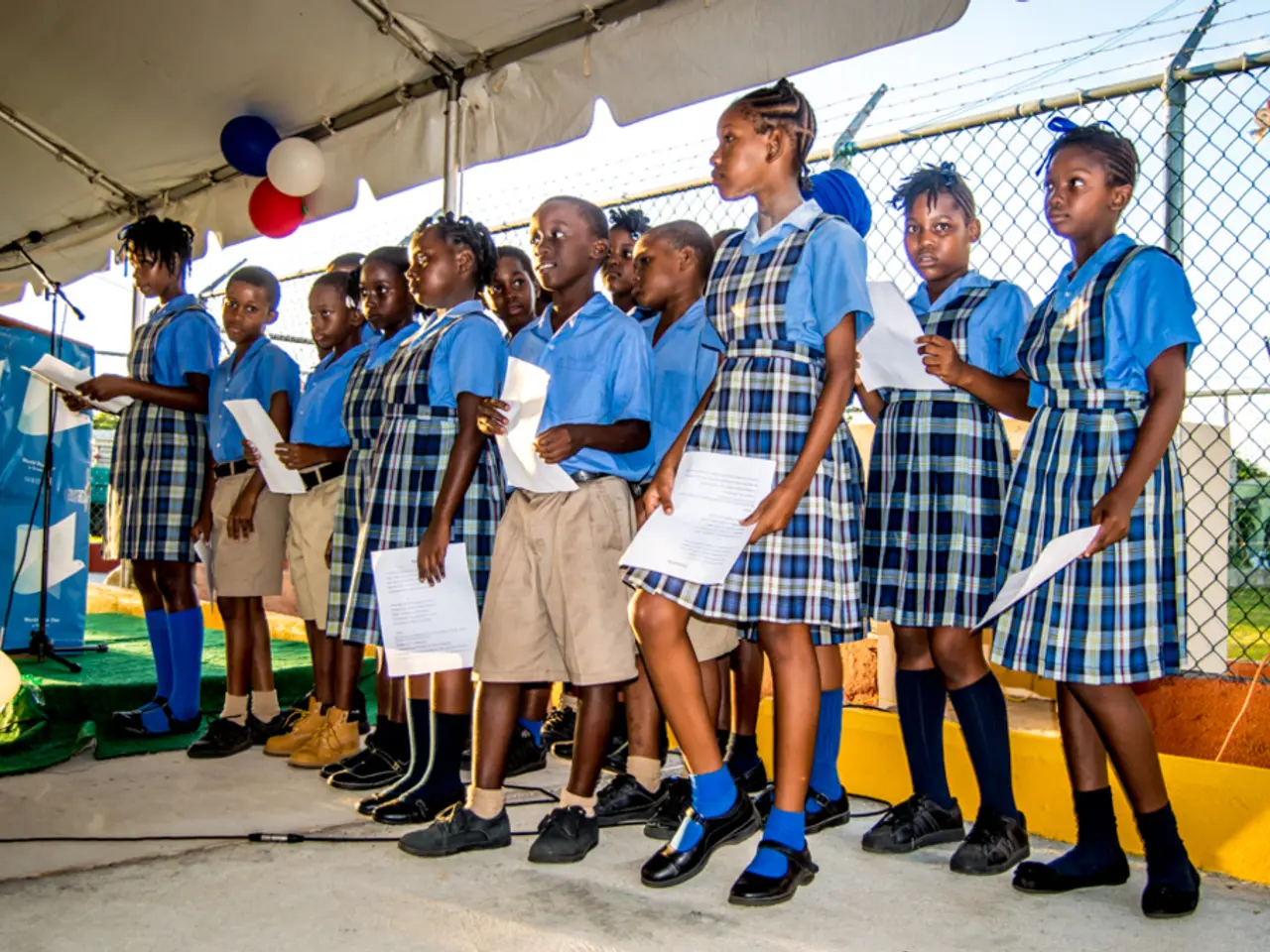Unveiled findings highlight distressing patterns of cyberbullying in Spain
In a recent report published by the Pantallas Amigas Foundation and Fundación ANAR, a significant increase in school bullying has been revealed in Spain. The study shows that cyberbullying, in particular, has become a growing concern, with 3.6% of students reporting combined in-person and digital bullying - a doubling from the previous year's 1.8%.
The report highlights the prevalence of bullying among 11- and 12-year-olds, making it the most common age group affected. Insults (84.8%) and social isolation (44.8%) remain the most common forms of bullying, but the use of artificial intelligence (AI) is increasingly being employed in 14.2% of cases.
AI is primarily used to create fake videos (54.8%) or impersonate identities (32.2%). This manipulation of content or impersonation adds a further layer of psychological trauma in cyberbullying cases, intensifying the humiliation and distress experienced by the victims.
The anonymity provided by digital platforms protects the bully, but the rapid spread of falsified media exacerbates the problem. Falsified media, such as fake videos or impersonations, spread more rapidly, leading to a more intense and widespread form of bullying.
Physical bullying has also seen a rise, with punches and kicks increasing by 8.7% to a huge 30.9% of cases. This physical violence, combined with the psychological trauma caused by cyberbullying, can lead to severe emotional distress, anxiety, and depression in children.
Parents are urged to act immediately if they suspect their child is a victim of cyberbullying. Open communication with the minor is essential, and monitoring their online activity discreetly is important. Collecting evidence, such as screenshots of harmful content, is vital for parents.
Encouraging children to share their experiences without fear of judgement is crucial. Parents should also be vigilant for signs of withdrawal or anxiety, which may indicate that their child is being bullied.
The Fundación ANAR Helpline (900 20 20 10) and Chat ANAR for anonymous support are available at anar.org (in English). These resources provide a safe space for children to discuss their experiences and seek help.
The long-term effects of cyberbullying are severe. Victims may develop trust issues, reluctance to engage socially or online, and academic difficulties. In some cases, cyberbullying has been proven to last over a year, causing prolonged emotional distress.
The rise in childhood victims of cyberbullying raises the question of whether children should be given access to social networks at all. While social media can provide a platform for learning and connection, it also poses significant risks.
As technology continues to evolve, it is essential that we address the issue of cyberbullying and find ways to protect our children from its harmful effects. By staying informed, being vigilant, and encouraging open communication, we can help ensure a safer online environment for our children.
Read also:
- Increased Investment in AI, Machine Learning, Internet of Things, and Quantum Computing to Propel Growth in the Digital Economy (2020 Budget)
- Explore Unbridled Imagination: Leveraging Public Domain Assets for Screenwriting Purposes
- Quantum Leap Career Fair 2025, Organized by SFAN: Focus on Proficiency, Artificial Intelligence, and Employment in the Future
- Google Faces Potential Disruption: U.S. Department of Justice Proposes Browser Separation and Implications for Artificial Intelligence Advancements








